Trees are such a valuable component of your landscape that you don’t want to see anything happen to them. But if you’ve noticed your tree has spots on its leaves or that maybe even the leaves are falling off the tree, then you may be worried your tree has something wrong with it. You’re concerned that you may lose one or more of your trees and are wondering if there is anything you can do to save them—or at least prevent the problem from happening in the future.
If your tree leaves are turning color (and it’s not autumn), falling off, or experiencing other issues, then it’s certainly possible that your tree may have a disease. That may be a scary thought and you may even feel guilty that you didn’t notice this and do something sooner.
But the truth is, you’re not alone. Most calls to tree services come when the homeowners start noticing problems with the leaves. After all, you are not a trained arborist and you aren’t equipped to spot problems until they’re quite noticeable.
We understand that you care deeply about your trees and you’re concerned about their health. That’s why we want to help you understand more about common tree diseases that might be leaving spots on your tree leaves or causing other visible problems. Understanding more about some of the disease problems your tree may be facing will help you choose the best course of action to deal with those concerns.
Understanding the Tree Disease Triangle
Developing a basic understanding of what might be happening to your tree means understanding how the “Disease Triangle” works. There are three factors that must be present and interact in order for a disease to develop in your tree.
- A suitable environment
- A pathogen
- A susceptible host plant
Just as there are three sides necessary to form a triangle, these three factors are necessary in order for your tree to develop a disease.
Common Trees That Are Susceptible to Disease
If you have leaves falling off a tree or that are turning color, then you may have a tree that is a susceptible host to a particular disease. There is a long list of potential host plants for disease but we’ve rounded up some of the most common. There’s a good chance that you might have one of these trees in your backyard.
Dogwood
Dogwood is a popular ornamental tree has beautiful flowers and foliage. While it is relatively hardy, there are some fungal and bacterial diseases that can cause problems.
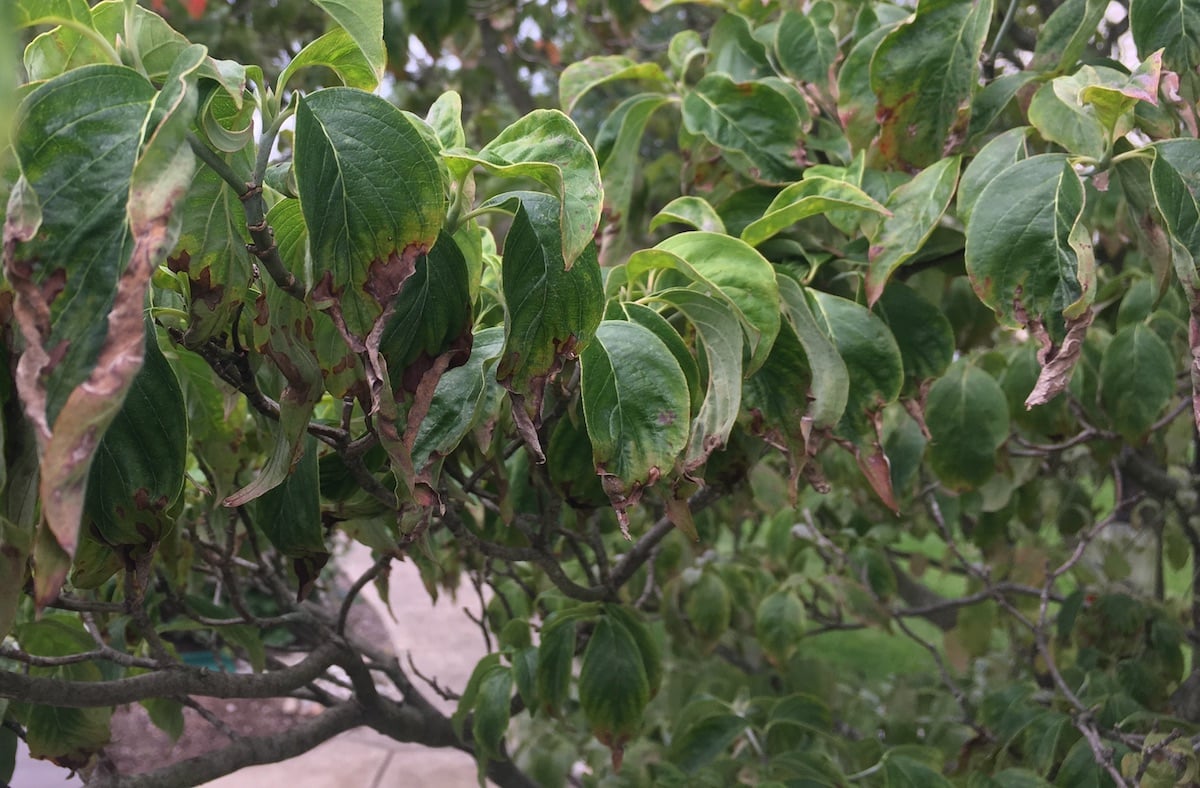
(Anthracnose on Dogwood)
Some of the most common Dogwood diseases include anthracnose, septoria leaf spot, and powdery mildew, which are all conditions that affect the leaves.
Oak
These classic trees are known for providing generous shade and being relatively low maintenance in the landscape. Even so, there are several fungal diseases that can impact the foliage of your oak tree including oak leaf blister, anthracnose, bacterial leaf scorch, and powdery mildew.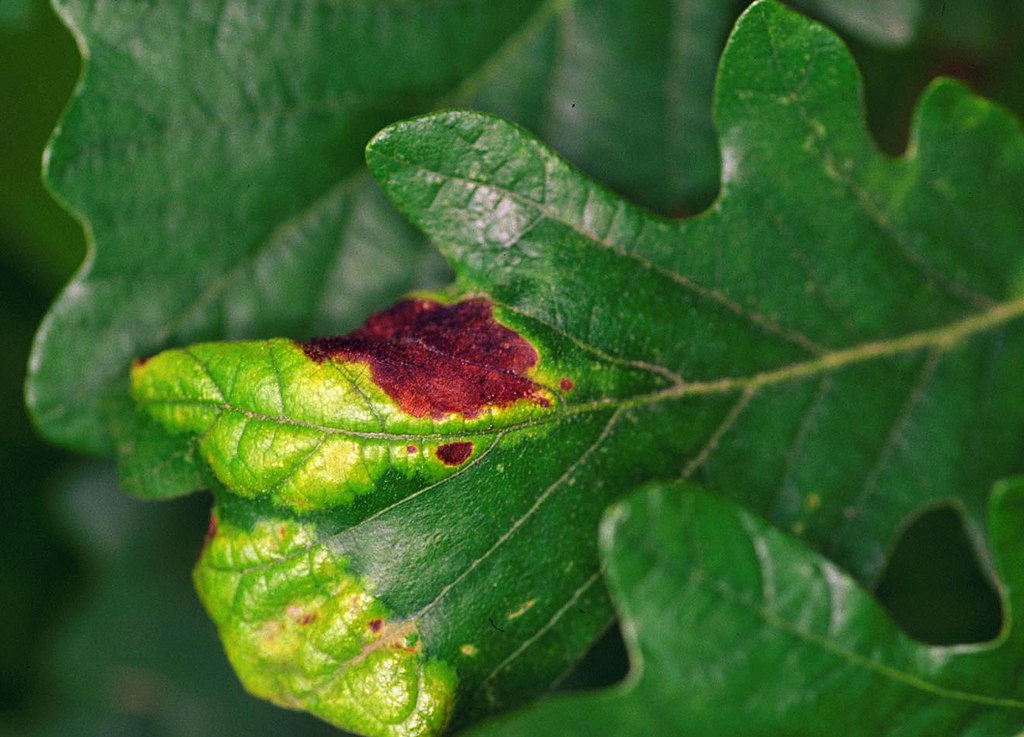
(Oak Leaf Blister)
Even more serious, oak wilt is a systemic disease that can kill your tree. If your tree leaves are turning brown or you have leaves falling off the tree, your tree may have this deadly disease.
Maple
Maple trees are known for their vibrant fall colors as well as their distinctive leaves. They make a lovely backyard tree but they can be a host to several diseases.
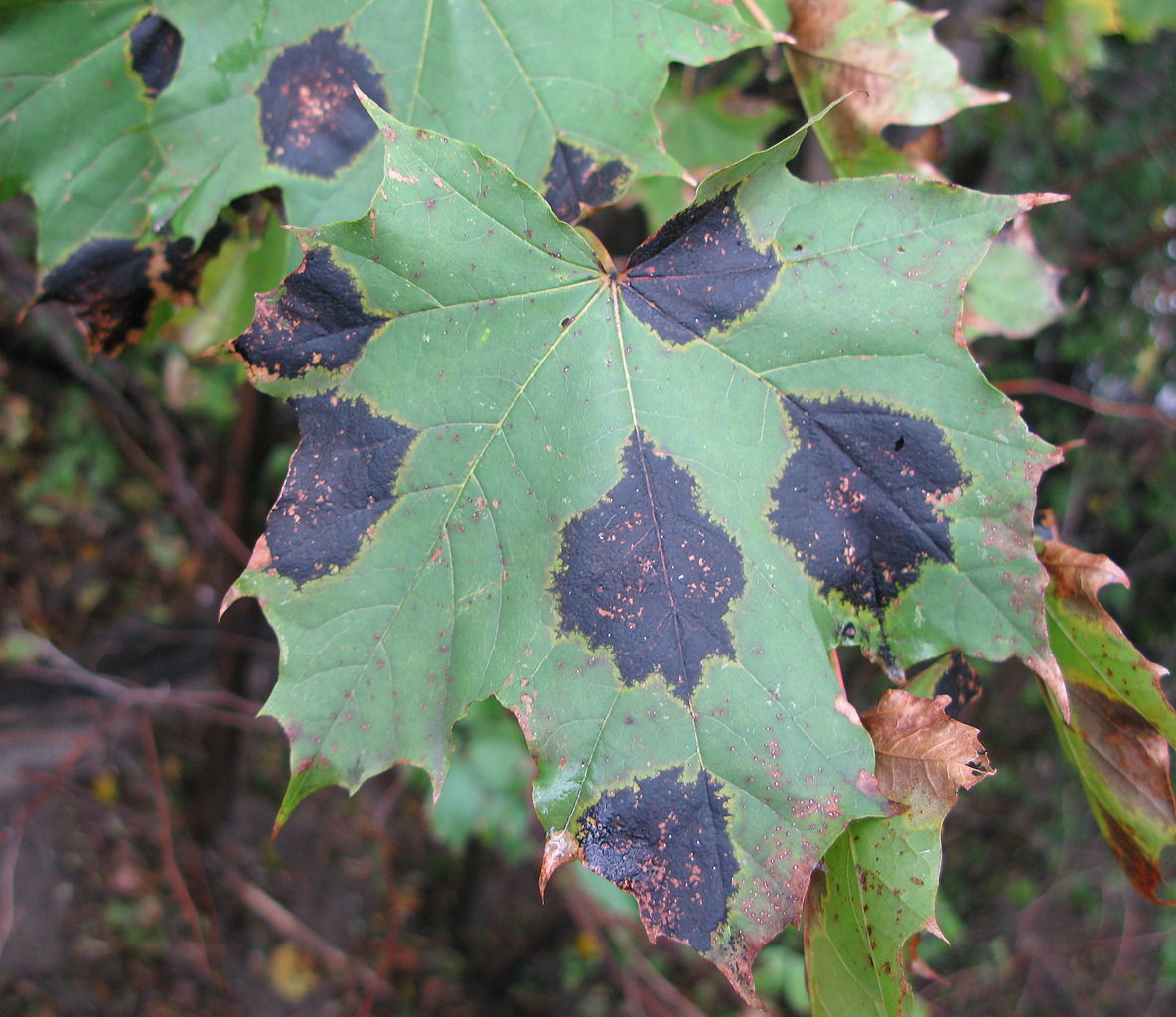
(Black Tar Spot on Sugar Maple)
Most commonly, this list includes verticillium wilt (also referred to as maple wilt), anthracnose, and tar spot which will cause black spots on leaves.
Cherry Tree
The cherry tree is probably best known for its beautiful springtime blooms. This is another tree that could liven up your landscape but may also be host to several diseases.
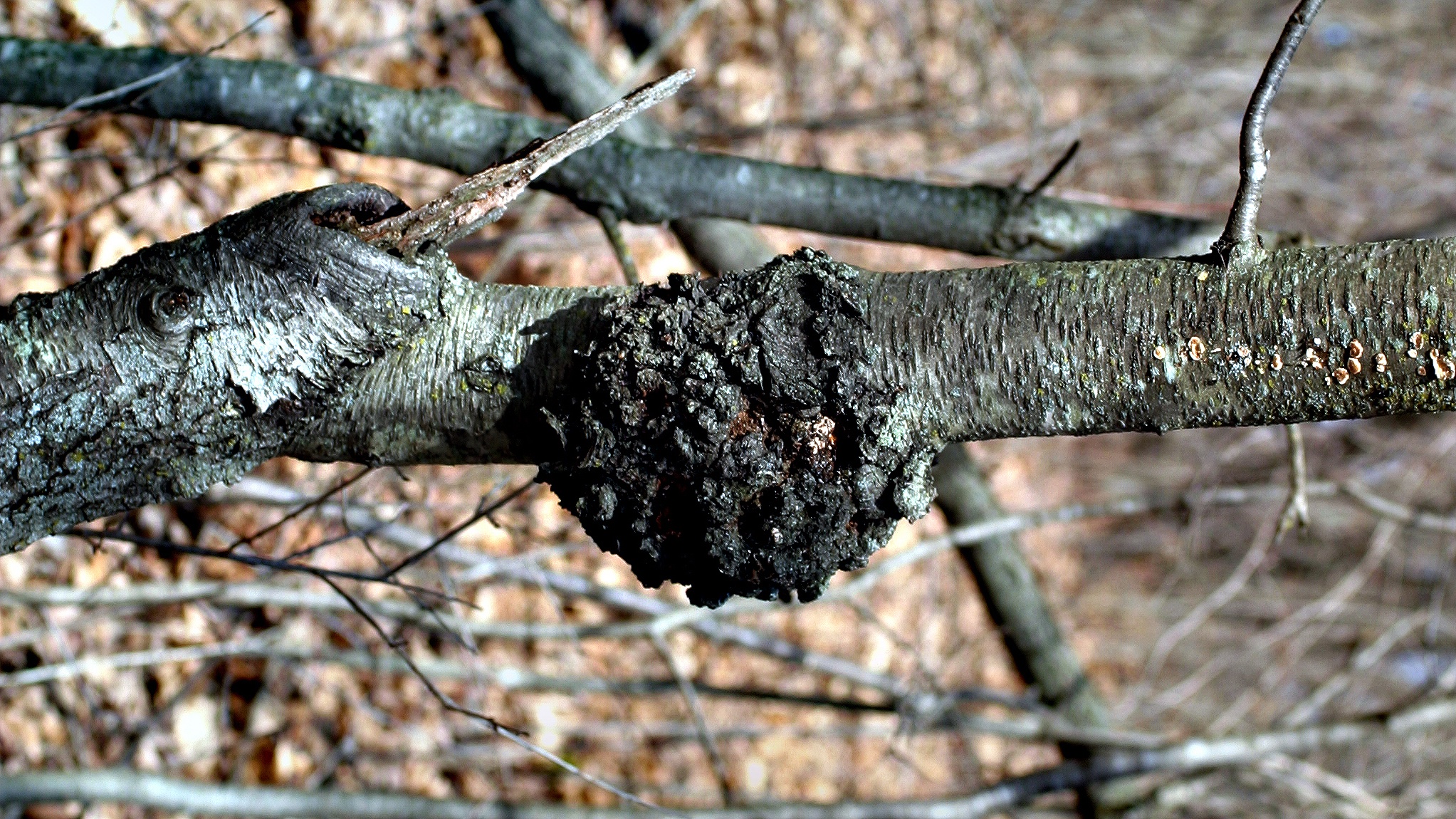
(Black Knot on Cherry Tree)
These include black knot, powdery mildew, cherry leaf spot, brown rot, and silver leaf. Many of these diseases cause spots on tree leaves. In addition, with silver leaf, you may notice a silver sheen or your tree leaves turning brown.
Douglas Fir
This popular evergreen is known for being America’s “favorite Christmas tree,” however it also makes a lovely tree in your landscape. In general, evergreens do face various disease problems including a number of fungal pathogens when they’re rooted in moist environments.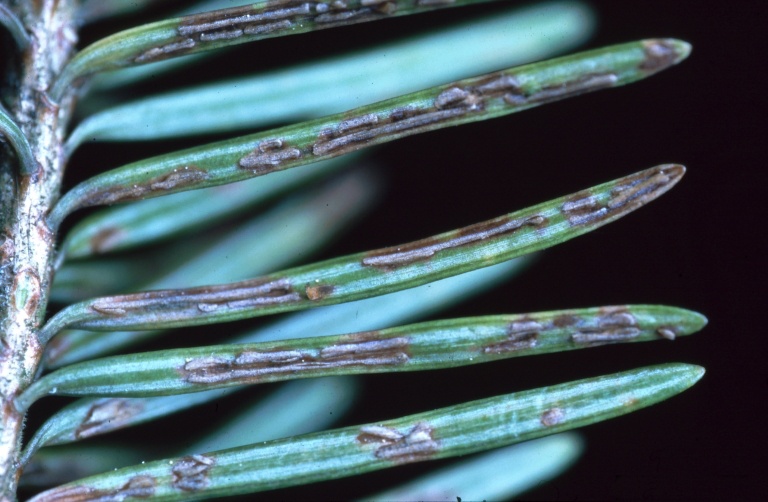
(Needlecast on Douglas Fir)
Needlecast is one of the most serious diseases that your douglas fir could face. It causes needles to turn brown and fall off. This disease can also lead to eventual death.
Ash
Though news of the emerald ash borer pest has been well communicated, it’s not the only threat your ash tree may face.
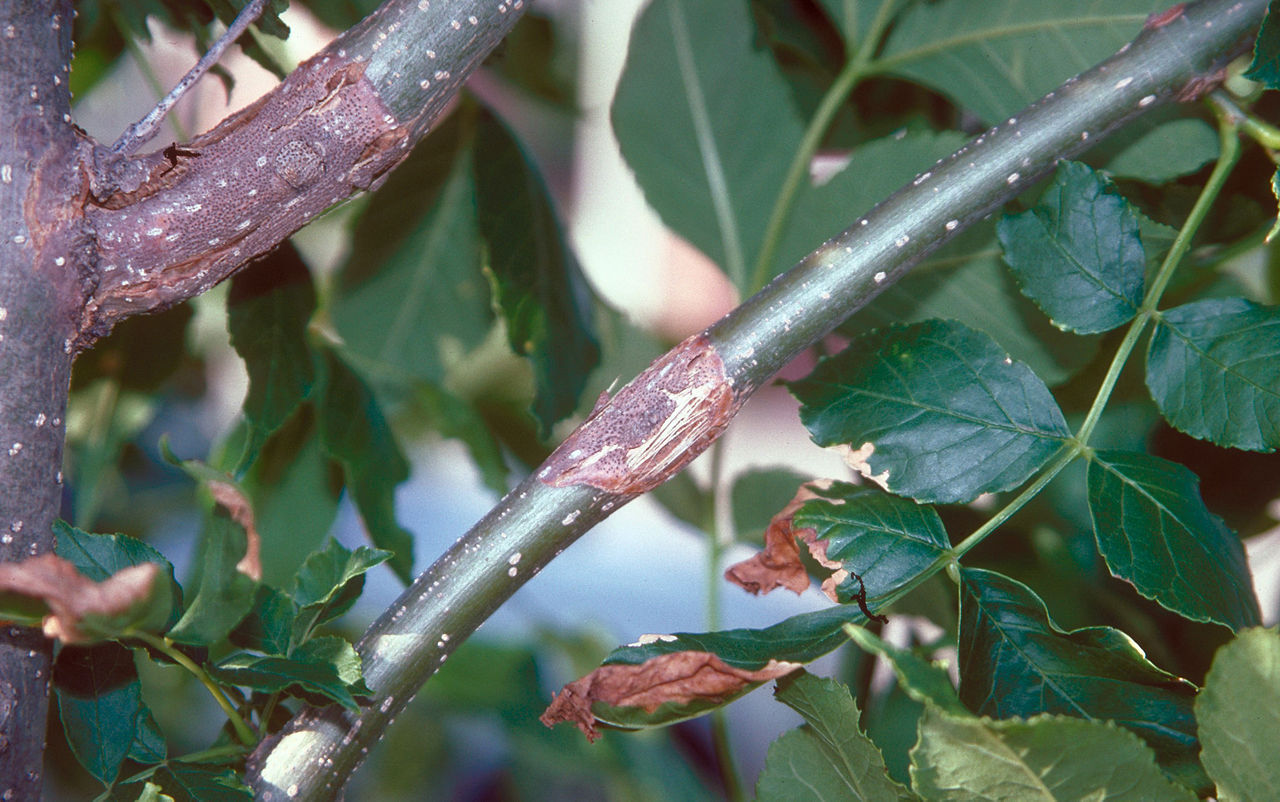
(Canker on Ash Tree)
Besides that deadly pest, ash trees are also susceptible to a variety of diseases including cankers, and diseases such as anthracnose, which will cause the tree to defoliate early. Verticillium can also be lethal to your ash trees.
Walnut
This tree variety makes a great shade tree as they commonly grow to be 50 feet or taller. Walnut trees are hardy but not without problems. In recent years, more and more walnut trees have become susceptible to thousand cankers disease, a progressive disease first noticed when tree leaves are turning yellow.
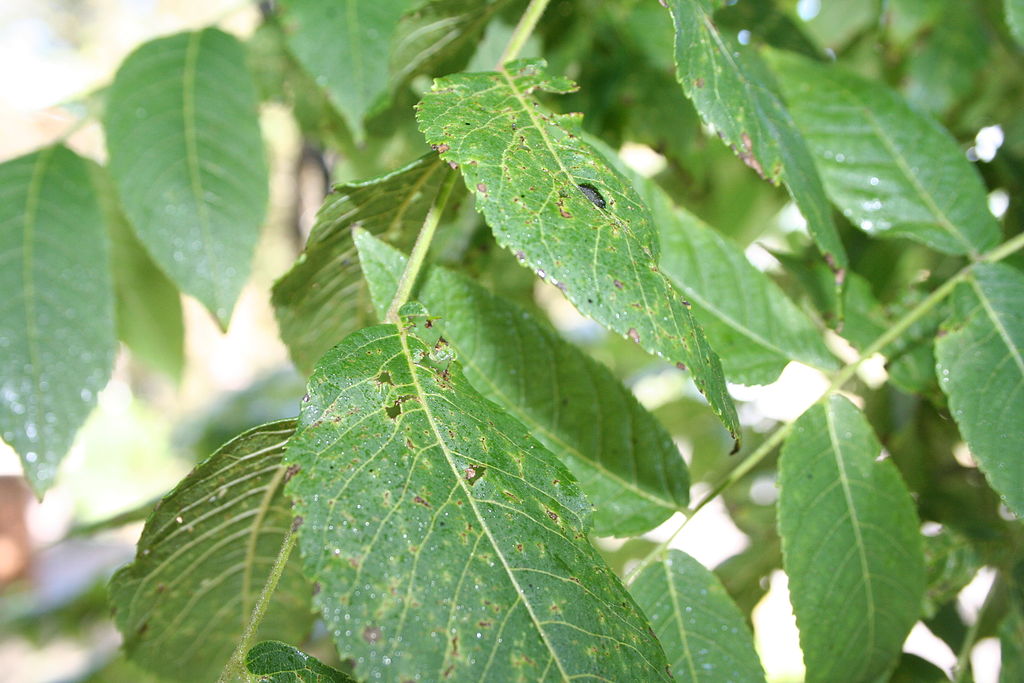
(Thousand Cankers Disease on Black Walnut)
There is no cure for thousand cankers. Walnut trees can also develop anthracnose, bull’s eye leaf spot, and white mold.
Can a Diseased Tree Be Saved?
If you suspect your tree may have one of these various diseases mentioned above, you might be wondering whether that means automatic death for your tree. The short answer is, no, not every tree disease will lead to death. Some tree diseases can be controlled. There are a lot of factors that come into play including how sick your tree is and what type of disease it has.
Of course, the exact recommendations for how to handle a tree disease will differ depending on the specifics of the disease. Even so, we’ll examine some of the common treatment options to give you an idea of what to expect.
Tree Disease Control Recommendations
The most obvious treatment for disease, such as a fungus infection, is the professional application of a fungicide. At Joshua Tree, we use two different professional fungicide products to deal with various fungal diseases. This includes a contact control, which will reduce fungal spores right away, as well as an additional product that will get absorbed over a longer period of time. 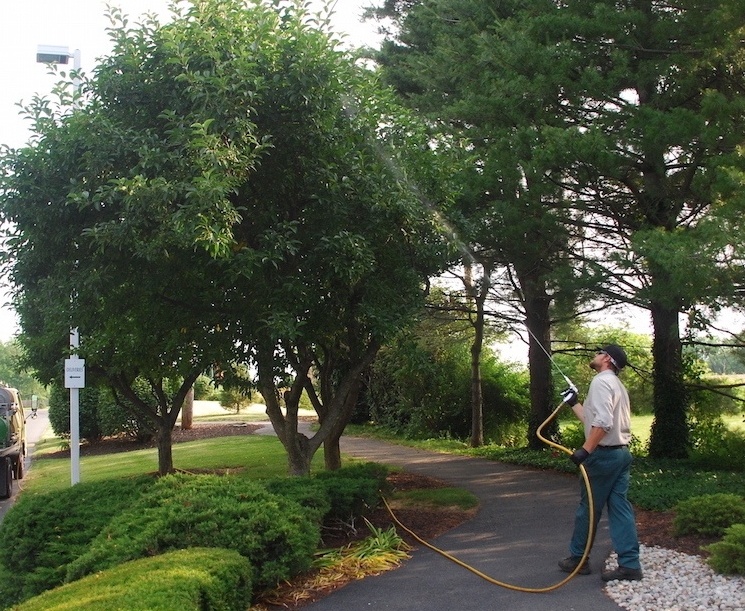 We perform the first treatment in the spring, at bud break, and then repeat the process every two weeks. We generally take a three-spray treatment approach to disease, though the severity of each situation makes it a case-by-case determination.
We perform the first treatment in the spring, at bud break, and then repeat the process every two weeks. We generally take a three-spray treatment approach to disease, though the severity of each situation makes it a case-by-case determination.
Besides treating the tree with a product such as professional fungicide, there may also be important cultural recommendations that will impact your tree’s health. For instance, we commonly find that homeowners may be contributing to poor tree health with practices such as over-mulching around their tree. When you mulch too close to the bark, you can trap water and create environmental conditions that are ripe for fungal infections.
Another cultural recommendation might be tree pruning. If you have a tree crown that is excessively thick, there’s a good chance that your leaves are retaining a lot of moisture. Thinning out the tree will help to allow those leaves to air out and dry when they get wet. 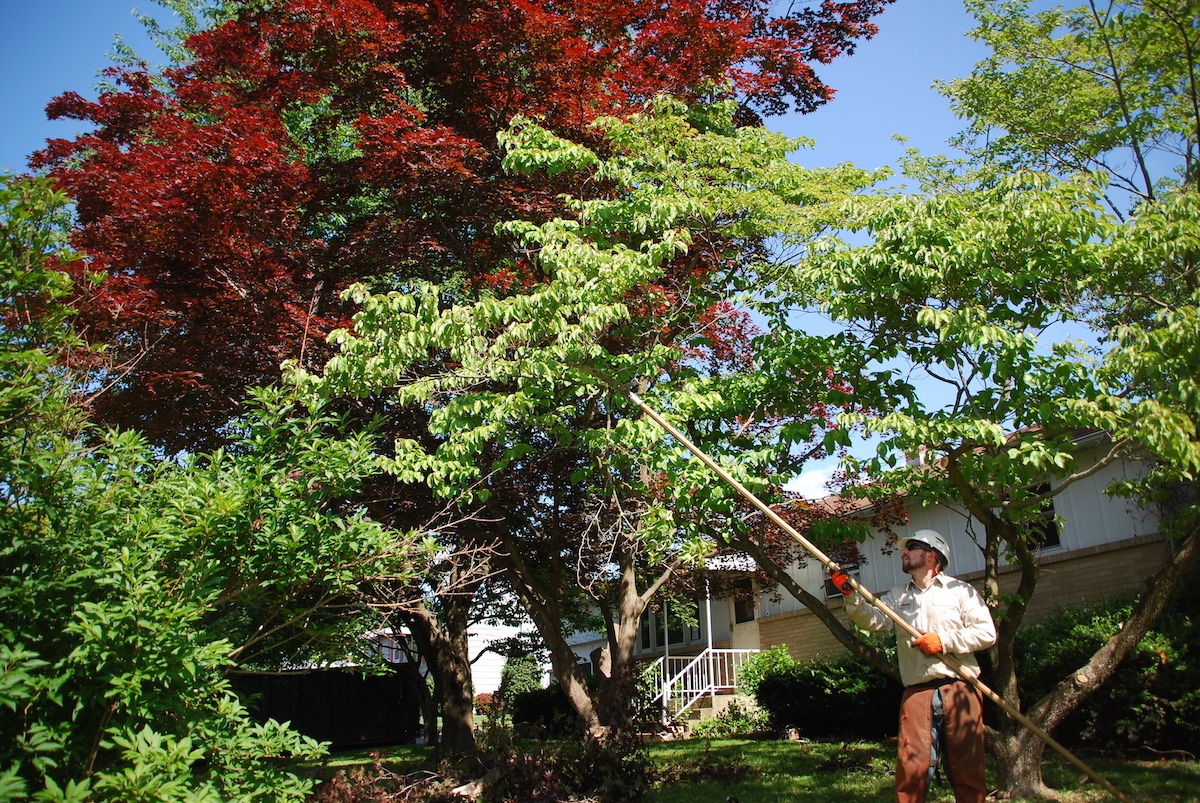 While there are often steps that can be taken to deal with disease, the hard truth is, sometimes a tree disease will mean death. Thousand cankers disease, for instance, has no cure. If we come in to see your tree and thousand cankers has already taken an aggressive hold, it may be too late. Tree removal might be your best option at that point.
While there are often steps that can be taken to deal with disease, the hard truth is, sometimes a tree disease will mean death. Thousand cankers disease, for instance, has no cure. If we come in to see your tree and thousand cankers has already taken an aggressive hold, it may be too late. Tree removal might be your best option at that point.
After all, the last thing that you want is for a diseased tree to become a risk in any way. While tree leaves that are black or falling off are an eyesore, disease that has progressed can also cause more serious problems such as decaying or dead tree limbs that pose a risk of falling. Even when it’s not that severe, some trees may never fully recover from being stricken with disease. They may look sickly or aesthetically unappealing for the rest of their life, leading you to choose to remove them based on appearance.
Protecting Tree Health
Going forward, you might be interested in protecting the future health of your trees and shrubs with a plant health care program. This adds a layer of protection to help your trees and shrubs defend against disease.

There’s no doubt that the host plant’s health is the most important factor of the Disease Triangle. This is why plant health care is so important. You can’t remove a pathogen in the air or soil (only suppress it) and you can’t always control the environment, either. Even spraying product is only so effective if the plant is struggling with poor health, to begin with. But healthy trees and shrubs can better defend against disease.
We offer 3 options for tree and shrub care treatment packages to help improve their health: a 4-step program, 6-step program, and 8-step program. In order to determine which option is best for your landscape, we’ll consider the species of trees and shrubs on your property, the degree of potential damage or problems already present, and your expectations for protecting your trees and shrubs or improving their health.
What’s Actually Wrong With My Tree?
While tree leaves turning brown, developing spots, or falling off could all be symptoms of disease, the truth is, you won’t know for sure until you have an expert evaluate your tree. There are other pests or environmental stressors that can cause similar damage as well.
That’s why it’s so valuable to have a Certified Arborist visiting your property regularly as part of a plant health care program. Not only will an expert be able to spot a problem in its early stages (and get a plan of action started), but the treatments your trees and shrubs will be receiving will help protect them from succumbing to these problems in the first place. In the end, that will give you peace of mind that your beloved trees are safe from harm.
If you’d like to find out how you can protect your property with plant health care, or how you can deal with a problem through disease control, then contact us for a free consultation or give us a call at 833-583-8733.
Image sources: bacterial leaf scorch oak tree, oak leaf blister, needlecast, black knot, black tar spot, ash canker, thousand cankers disease




